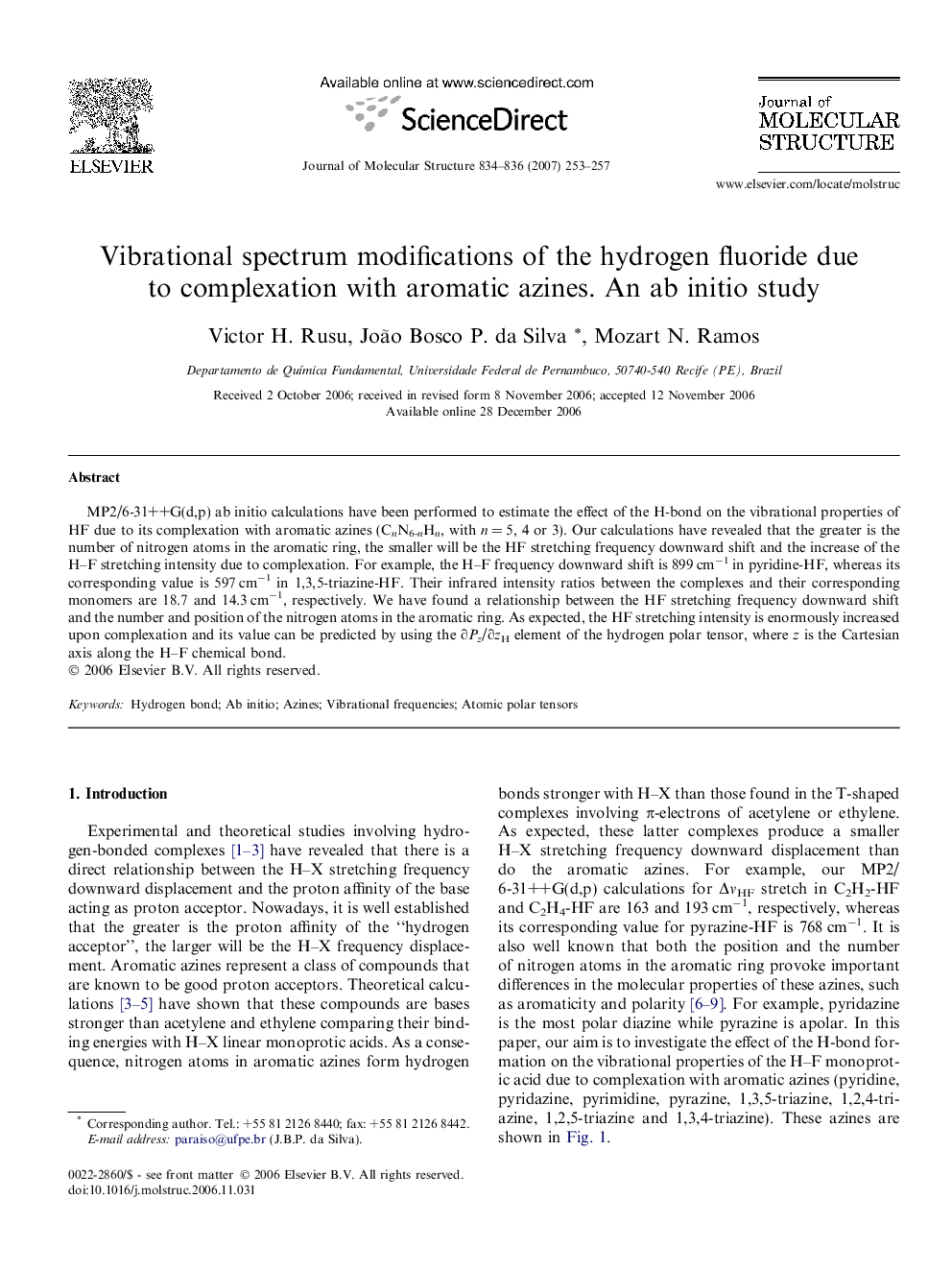| Article ID | Journal | Published Year | Pages | File Type |
|---|---|---|---|---|
| 1404395 | Journal of Molecular Structure | 2007 | 5 Pages |
Abstract
MP2/6-31++G(d,p) ab initio calculations have been performed to estimate the effect of the H-bond on the vibrational properties of HF due to its complexation with aromatic azines (CnN6-nHn, with n = 5, 4 or 3). Our calculations have revealed that the greater is the number of nitrogen atoms in the aromatic ring, the smaller will be the HF stretching frequency downward shift and the increase of the H-F stretching intensity due to complexation. For example, the H-F frequency downward shift is 899 cmâ1 in pyridine-HF, whereas its corresponding value is 597 cmâ1 in 1,3,5-triazine-HF. Their infrared intensity ratios between the complexes and their corresponding monomers are 18.7 and 14.3 cmâ1, respectively. We have found a relationship between the HF stretching frequency downward shift and the number and position of the nitrogen atoms in the aromatic ring. As expected, the HF stretching intensity is enormously increased upon complexation and its value can be predicted by using the âPz/âzH element of the hydrogen polar tensor, where z is the Cartesian axis along the H-F chemical bond.
Related Topics
Physical Sciences and Engineering
Chemistry
Organic Chemistry
Authors
Victor H. Rusu, João Bosco P. da Silva, Mozart N. Ramos,
